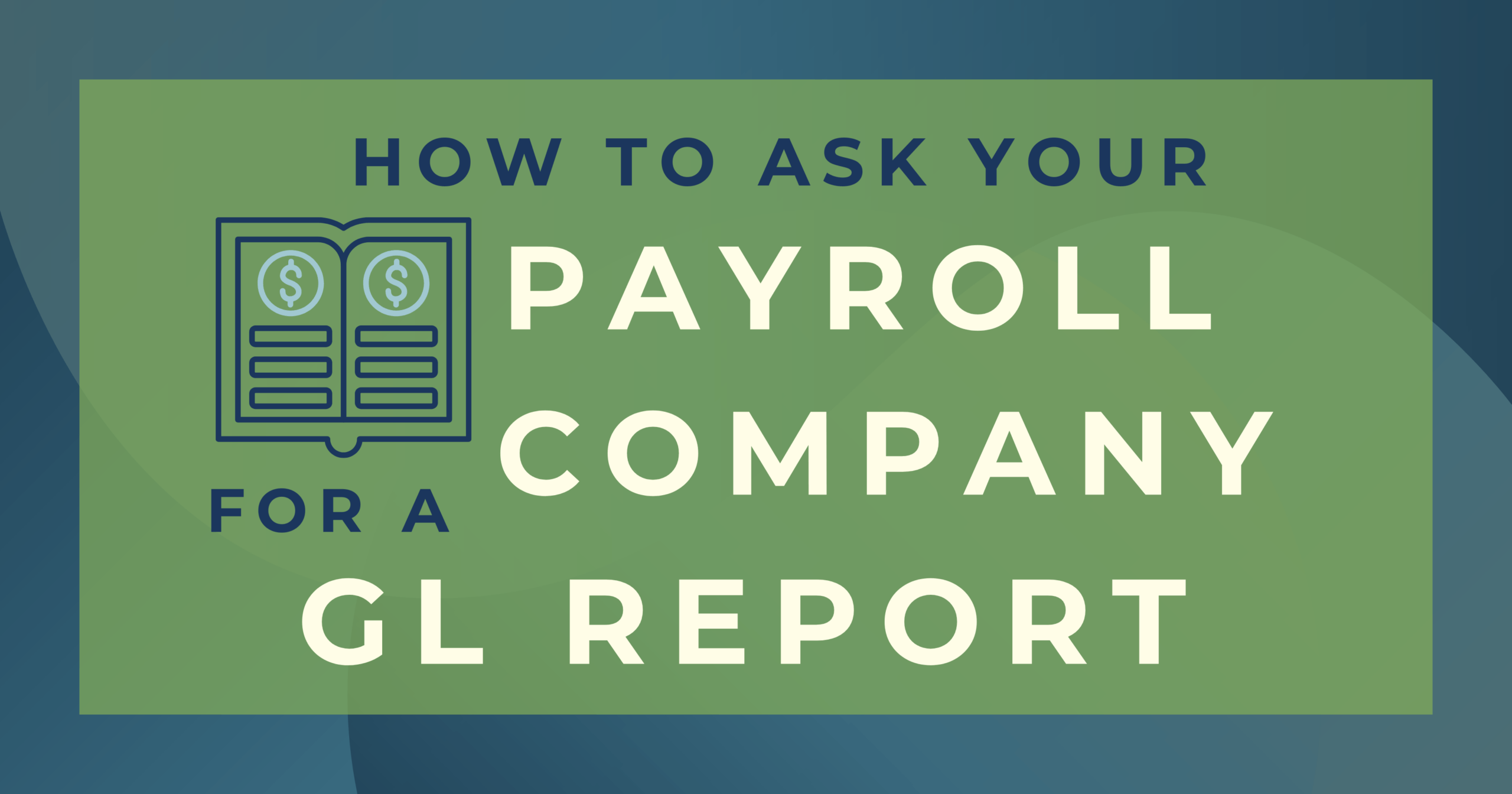How to Ask Your Payroll Company for a GL Report
December 15th, 2023 | 3 min. read

Making decisions can be difficult for many people. At Whirks, we use personality assessments to enhance our understanding of our teams' ability to make prompt and impactful decisions. One of the tools that we use is the DISC assessment. The oversimplified explanation of DISC is that a person who scores higher in the D component (Decisive) has an easier time making decisions. Now, those decisions may not be the right decision, but at least a decision has been made. In our organization, we talk a lot about decision making and a common theme always presents itself - decisions are more easily made when good information is present.
This isn’t breaking news… if my wife calls and starts with, “Do I need to go to the hospital?” I will probably ask follow-up questions to get more information so that I can make a wise decision. In contrast, if she says she thinks she broke her arm in a skiing accident and wants my opinion on going to the hospital, I'll likely say yes. The key here is that information brings clarity to decision-making.
If you are a business leader who wants to make faster, more informed decisions, you need to be able to look out the rearview mirror AND out the windshield. As we talk about in our blog, Understanding Your Labor Costs, getting access to timely information on your labor cost allows for better decision-making.
How Can You Make Faster, More Informed Decisions in Your Business?
One practical approach is to configure your payroll system to generate a report that streamlines the tracking of wage data. At Whirks, we call this Labor and General Ledger (GL) reporting. A Labor and GL report serves as our method for dissecting the various components of payroll, including earnings, deductions, and taxes. This breakdown is designed to be easily understandable by both accounting teams and systems. The goal is to provide decision-makers with real-time feedback, enabling them to make informed choices based on a clear and concise understanding of payroll-related financial data. In layman’s terms, a labor and GL report tells me how much my people are costing me for each category of people that I have.
Let’s pretend I operate an accounting firm (wink wink, check out Patrick Accounting. I would probably categorize my employees into departments and jobs… Let’s say I have a production team, an admin team, and a sales team. My production team comprises accountants and managers. Ideally, I want to know how much my sales and marketing efforts cost separately from the labor expenses associated with production (accountants and managers). Similarly, I'd like to see the labor costs for administration separately. To do this, I categorize each employee in my payroll system according to their specific job function. This categorization enables me to generate a report that aligns labor information with the appropriate category used by my accounting functions.
For instance, I can classify my sales team as Labor - Sales and Marketing, and my operations team as Labor - Production on my Profit and Loss statement. This categorization allows me to precisely understand the expenditure related to producing my accounting services. This information becomes instrumental in making informed decisions, such as pricing my services competitively and optimizing operational efficiency. Implementing this reporting practice should be a routine part of every payroll run, although it might require some initial setup and adjustments to get right.
Initiating GL Report Development
Start by reaching out to your payroll partner to ask what information is necessary for them to build out a GL Report. Be prepared to provide basic details such as the accounting system you use, your chart of accounts, and the mapping that illustrates how your chart of accounts accommodates payroll (this can range from a sample journal entry to a comprehensive mapping provided by your payroll company). The goal at this stage is discovery—figuring out what is needed to finish this project!
Creating a Reporting Structure
Once you've got a clear understanding of the required information and expectations, and all necessary details have been provided, it's time to create your reporting structure. While some payroll companies may handle this step for you, others might offer instructions for you to set it up yourself. Regardless of the approach, the ultimate objective remains the same: to generate a single report that furnishes a journal entry usable by your accounting function.
Automating Payroll Journal Entry
The last step of the process is to investigate ways to automate the journal entry generated by payroll and seamlessly integrate it into the accounting systems. Some tech providers have established seamless connections with major payroll companies, facilitating a straightforward integration. Others may require additional technical assistance from your IT resources. In either scenario, both your payroll and accounting vendors should be able to offer clear guidance on the steps required to establish this connection, if it is possible.
Testing and Refining
Once the connection is established, test and iterate. Similar to refining any strategy, the first iteration serves as a foundation. Subsequent versions, particularly the fifth, typically bring enhancements, and by the tenth iteration, we've optimized the system to its fullest potential. Continuous refinement is essential, especially as organizational dynamics change or as new information needs emerge. Your accounting team should be proactive in fine-tuning the setup to align with the evolving requirements of your organization, ensuring that the integrated system consistently meets your specific needs.
Choosing the Right Payroll Partner
If you're seeking a payroll partner that prioritizes your success by guiding you through insightful reports and strategic planning, explore how Whirks can be the perfect fit. Schedule a 15-minute call to see if our tailored solutions align with your business goals.
And for those wanting to learn more about payroll reports, check out our blog about the 7 best payroll reports you need to run for your business.
Topics: